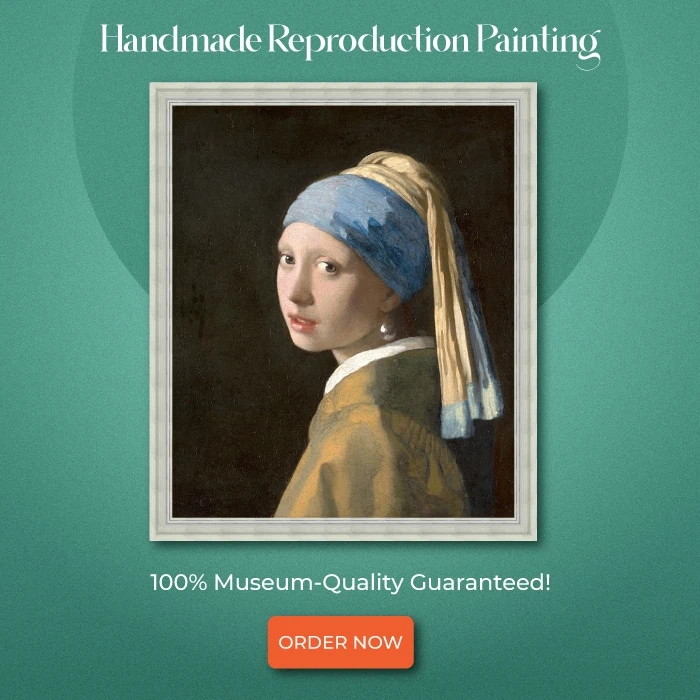What do you see when a flock of birds is flying in the sky?
Or when the rain drips from the window sills?
Or when you closely watch a honeycomb?
Isn’t there some kind of arrangement? Maybe, repetition?
Is “pattern” the word you’re looking for? Then yes, you’re on the right page!
Patterns are a crucial everyday part of our lives, without which a lot of us cannot even survive.
There is a pattern in everything!
Even if you try your level best, you will fail at avoiding patterns in your life!
Pattern in what you do, what you see, what you hear, what you feel.
Just like that, there is a pattern in art too, and today’s blog is all about exploring this very special principle of art!
I personally believe that pattern is something that we just cannot take out of the equation even if we wish for it!
From the few examples I gave above, it is a reminder that the patterns we see in nature are often manifested through patterns in art.
So, aren’t you curious to decipher the logic behind how patterns are formed and how an artist uses patterns in art?
Let us dig right in and unfold everything you need to know about pattern in art and the elements of art!
Table of contents
What are Patterns in Art?
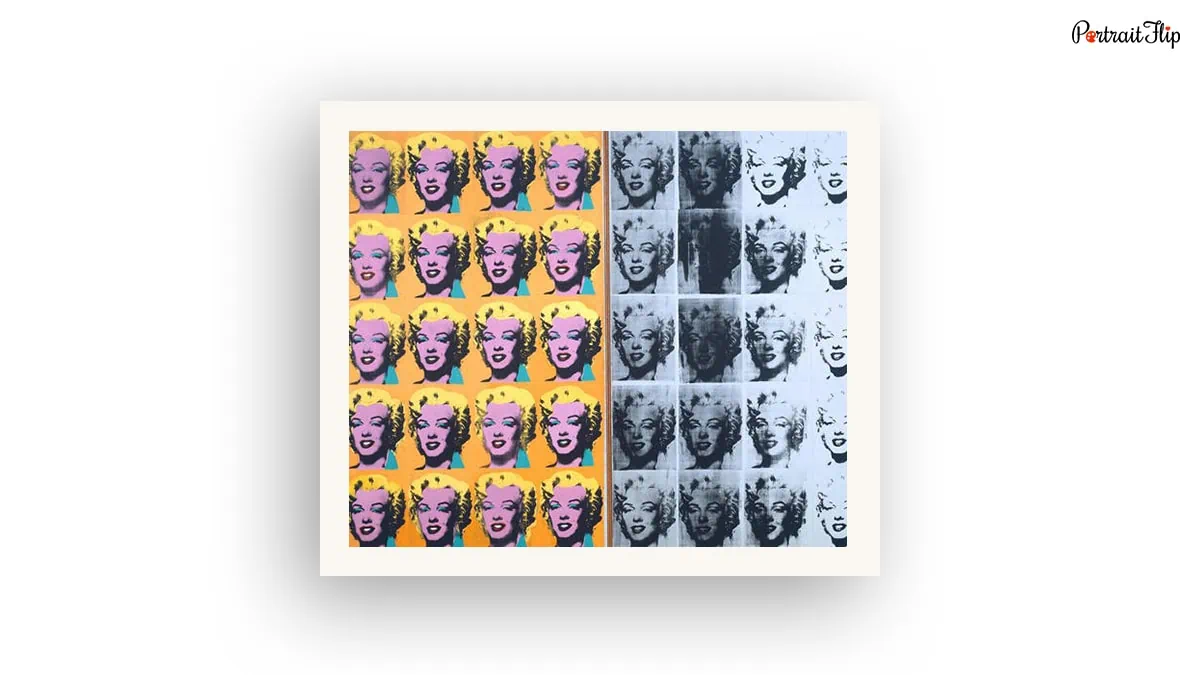
Let us get into the basics first before understanding the concept of “Pattern in Art”!
Pattern and art have gone hand in hand if you trace back to the history of painting.
So, what is a pattern in art?
Have you heard of the principles of art? — Let me explain!
There are several principles of art, but the ones that are most noticed and discussed are:
- Balance
- Harmony
- Unity
- Pattern
- Repetition
- Rhythm
- Contrast
- Emphasis
- Variety
- Movement
- Scale, and
- Proportion
These principles often overlap each other as they are all closely tied and compliment each other .
But if you take any art piece, you will see at least a minimum of 5 principles of art.
Pattern in art is also one of the most important art principles that can be noticed in almost all artworks across styles and genres.
In simple words, any kind of arrangement, repetition, and sequence that you find around you and in art are recognized as a pattern.
There are both natural and man-made patterns, but our focus for this blog will be on the man-made pattern in art!
Art patterns are created in a plethora of ways, and they differ in style, shape, color, and other elements.
Some famous artists around the globe have used this art principle to create breathtaking art that dives deep into the human psyche!
How Do Patterns in Art Work?
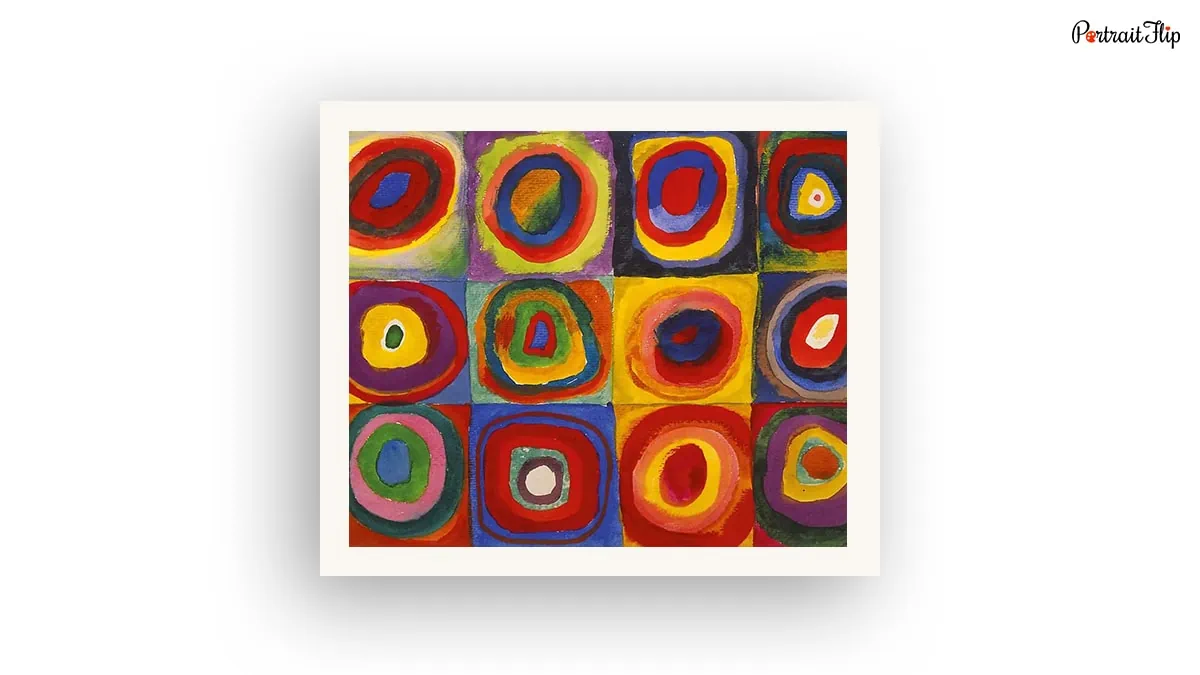
The definition of pattern in art states that it is formed through specific sequences and arrangements.
These repeated arrangements are made particularly using signs, shapes, or motifs that contribute to an elevated visual experience!
When you think of art or creating art, what are the different aspects that you can think about?
There is color, of course, and then you have the designs and shapes you spill on the canvas, which also include lines, and so on!
All these aspects incorporate different arrangements to create a pattern that helps in forming the art you want.
Not one or two, but an artist can create different types of patterns that best suit their style and form of art.
(Want to know another fun fact?
Did you notice how you can incorporate more than one element of art while creating patterns and create something completely unique?)
Yes, these are the exclusive features of pattern in art that make it stand out from other art principles.
The different elements of art as we know are colors, texture, space, shapes and forms to name a few.
With each element, art patterns come out in a unique manner— a unique design!
An important component we need to look out for in patterns is repetition!
Because repetition is what helps in creating every unique pattern!
Why Is Repetition In Art So Important?

I know what you must be wondering—weren’t we talking about patterns in art?
Then where is repetition coming between this? And more importantly, why?
As I mentioned earlier, these principles of art and their elements do overlap and intertwine with each other because art has no boundaries.
Even then, repetition means a lot more when it comes to pattern in art!
As you might have noticed around you, there are several types of patterns you see around yourself.
There are sets of lines, dots, circles, curls, curves, and all possible kinds of shapes going in every possible direction.
What makes these different shapes into patterns is that they are repeated several times.
Repeated patterns in art create something new and unique!
Take any fragment from the universe and keep repeating it, and voila, you will have a pattern!
Apart from this fundamental function, I would like to introduce you to a certain artist’s work whose art patterns meant more than what you saw.
Andy Warhol’s art patterns were not just patterns in art but also an indication of the ideas of consumerism.
The message the American artist was sending through his art was that mass media can reproduce products because of repetition and will continue to do so.
Patterns make way for replication, and they not just become a thing for the eye but also end up turning into something deeply meaningful!
Patterns with Colors
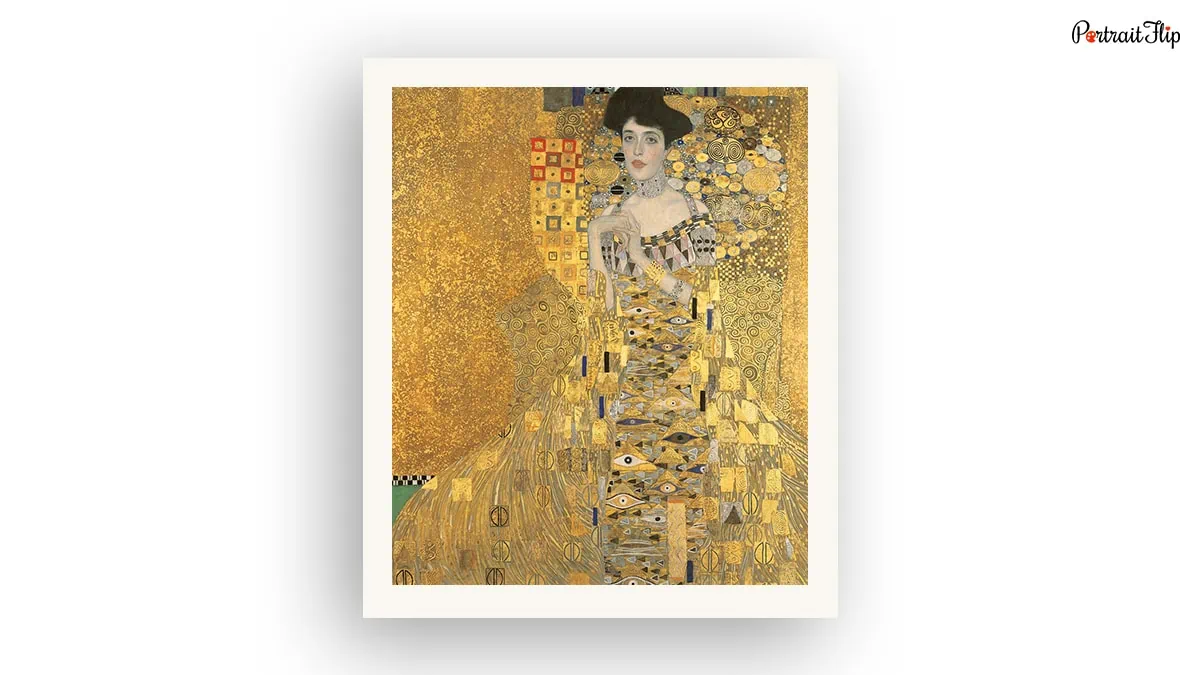
One cannot think of colors and patterns in art without thinking of Gustav Klimt!
This famous painter is known for his extravagantly decorative art pieces that literally represent gold.
Being an expressionist artist, he took expressionism to another level with his gold infused work
Because of this, there was a particular pattern in art that he followed in all his artworks– the gold and glitter element.
But how did he do this? Let us look at his artwork to understand better.
Klimt’s Portrait of Lady in Gold won a million hearts, but if you look closely, how do you think he incorporated the pattern in this artwork?
This is a great example of pattern in art with reference to color because color can be easily incorporated into any shapes or designs.
This is why in The Kiss and in Judith and the Head of Holofernes you see similar gold patterns.
Using colors in patterns also becomes imperative when used with the right intent of feelings or emotions.
Color makes you feel and evokes emotions, and when used correctly with patterns, it delivers perfectly!
Klimt’s intent through his paintings was to make his viewer feel something.
This was done adding elements of glamor, extravagance, and decorative aspects.
Because of this, colors often become the subject and intent of the painting.
Patterns with Texture
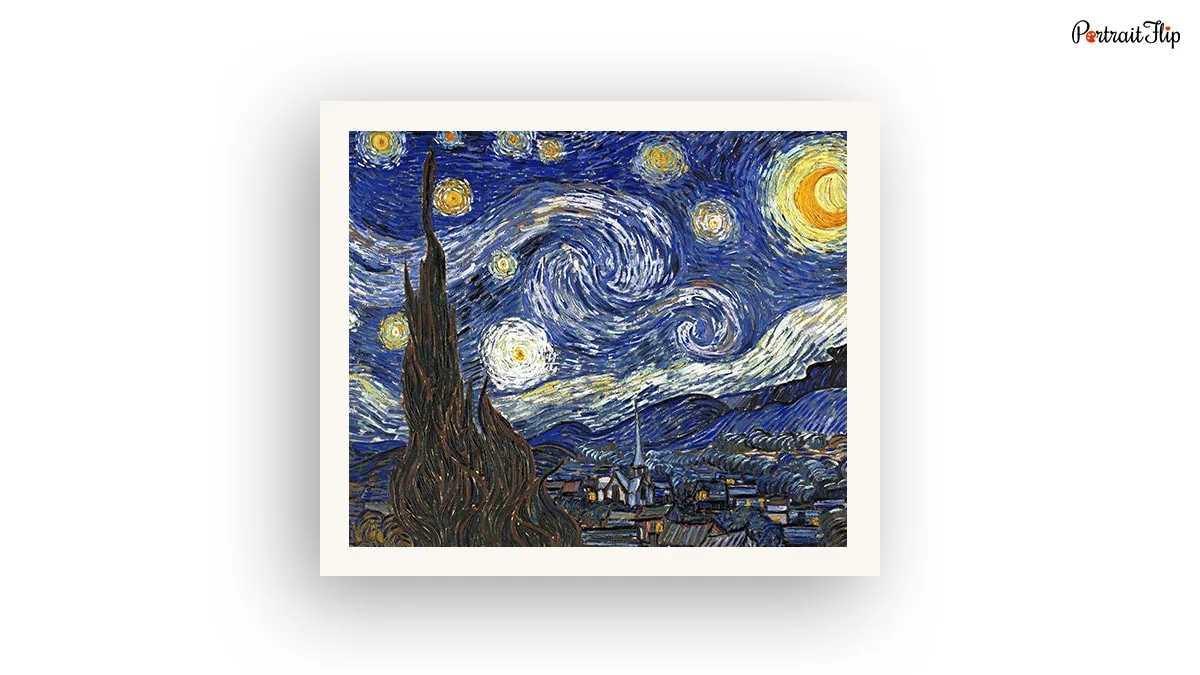
How do you think texture can be implemented in visual art?
When texture is brought into the visual arts, it is either made illusionary for the viewer’s eyes, or physically created so that it can be touched.
This is done by the magic of paint brushes by skilled artists.
To have a more tangible texture, some artists even use different materials to layer on the painting or artwork.
But the ones that are illusionary play with our minds even more!
One such artist who is infamous for his textured patterns is Vincent van Gogh!
Van Gogh’s Starry Night and Sunflowers, among other paintings, have a common similarity.
It is easily noticeable! Vincent van Gogh’s extraordinary brush strokes created a new wave in the art world.
Everything you see in Starry Night is supposed to stir something in you.
The constant swirls of paint and colors existed for a reason!
Even the moon and the stars have a circular pattern around them, probably indicating illumination.
But what else is conveyed through these patterns?
They depict Van Gogh’s own mental state while painting this masterpiece.
At the same time, it is also a perspective he wanted to show the world.
A perspective for everyone willing to look from his lenses.
Patterns in Space

The next pattern element of art we will look at is space!
What does “pattern in space” mean?
In an artwork, any pattern that comes around or apart from the subject of the painting is called the space.
Patterns are also incorporated in this space by many famous artists.
One such famous individual is Bisa Butler, a contemporary black artist, whose artworks have unique patterns all over them!
The one we see above is called “Anya with Oranges”.
As you can see, it is a vibrant painting with the orange theme standing out predominantly, but I want you to notice the backdrop.
There is a pattern, isn’t there?
In fact, the majority of the “oranges” from the theme is incorporated as a pattern in the background space!
This famous female artist used the principle of pattern in art with respect to space, because the background space adds depth to it too.
It is interesting when patterns take over these spaces because these are also spaces that are usually untouched or somber in nature.
Adding pattern to art creates a whole new dimension to that particular art piece and it is then viewed from a whole different perspective!
Patterns in Shapes and Forms
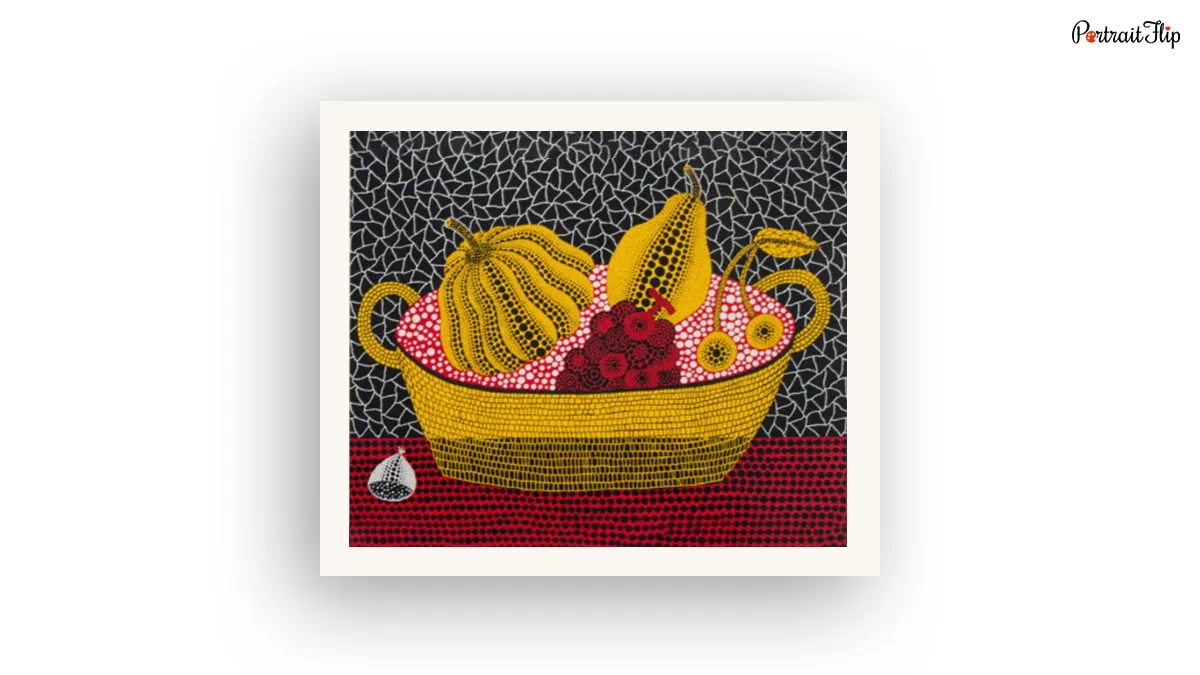
We have briefly discussed patterns in shapes and forms because that is the kind of pattern that is easily visible.
The artwork chosen to discuss patterns in art with respect to shapes and forms is by Yayoi Kusama, who excels at contemporary Japanese art!
Kusama’s set of fruits shows a unique kind of pattern within it, where the fundamental unit of the pattern is circles or dots.
Pattern in shapes or forms wholly depends on how it is formed and what intent you give it.
The goal is to keep a balance between the artwork and the pattern that is used.
Therefore, now we know that examples of patterns in art are everywhere around us.
It just takes an observant, artistic eye to notice one!
Author’s Greetings
Hello Readers,
I hope you enjoyed reading everything you need to know about patterns and art!
If you have reached till here, thank you for your valuable time.
I look forward to hearing from you, so please feel free to reach out to us in the comments below.
Until the next time
Cheers xx
Frequently Asked Questions
Repetition of a specific arrangement or sequence that enhances visual effects is known as a pattern in art.
Gustav Klimt and his elaborate decorative art are known for being one of the best examples of patterns in art.
Andy Warhol’s art focused on the effects of consumerism in the world and it was depicted through his pattern art.
Repetition is one of the art principles that is used to create pattern in art, therefore they are both intertwined in nature.






